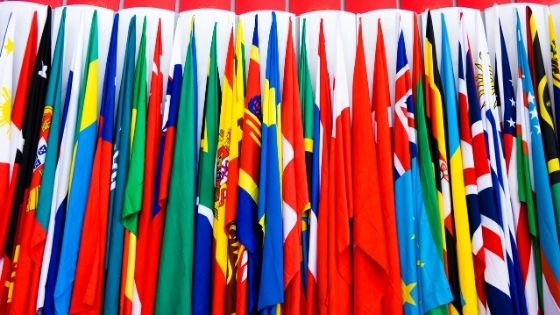There are so many different pride flags available these days, with more and more unique designs coming out every year. You can rep your pride in so many different ways with so many different designs and styles.
History of the Pride Flag
The first pride flag was designed in 1978 by an openly gay man named Gilbert Baker. Later, it was revealed the Baker had been encouraged to create the design by Harvey Milk, an openly gay elected government official. Milk encouraged Baker to create the flag, as Milk wanted the gay community to have a symbol of pride.
In 1994, the rainbow flag truly became a symbol of pride during the Stonewall riots. The progress pride flag, which is popular today was designed by Daniel Quasar who thought that they could emphasize the design of the flag to give it more meaning.
The classic pink, blue, and white trans flag was designed in 1999 by Monica Helms, a trans woman. She used the traditional colors for boys and girls to represent gender binary, and the white to represent those who are neutral gender, no gender, questioning, or transitioning.
Gay Flags
Of course, there’s the traditional rainbow flag that represents everyone in the LGBTQ+ community, but then there are also gay flags specifically for gay men. The gay flag that is most promenant, aside from the rainbow flag, is one that is various shades of blue.
There’s also a flag for “bear brotherhood” which represents more masculine-presenting gay, bisexual, and trans men.
Lesbian Flags
There are also multiple lesbian flags available for women who want to show their pride. The main lesbian flag has orange and pink hues, representing gender non-comformity, independence, community, unique relationships to womanhood, serenity and peace, love and sex, and feminity.
There’s also a “lipstick” lesbian flag that has kiss marks on the upper left hand corner, meant to represent lesbians who lean more feminine.
Bisexual and Pansexual Flags
The biseuxal flag was created in 1998 by Michael Page. The design was created by overlapping the two traditional gender colors, pink and blue, to form purple. Bisexuality does not mean the attraction to only two genders, but to two or more genders, as represented by the blend of purple in the middle of the flag.
The pansexual flag represents the interest in all genders, pink for women, blue for men, and yellow for non-binary, non-comforming, and genderfluid people. This flag was created in 2010 as a way to distinguish bisexuality from pansexuality.
Non-Binary, Genderfluid, and Trans Flags
There are many, many pride flags out there that represent trans people, gender non-comforming people, and non-binary people. Trans is an umbrella term that encompasses anyone who doesn’t relate to their assigned gender at birth. Therefore, non-binary people, genderfluid people, and other gender non-comforming people are welcome to use this flag.
However, there are also specific flags for non-binary people and other genders. The non-binary flag was created by a 17 year old named Kye Rowan in 2014 for genders that exist outside of the binary (yellow). White represents all genders, black is no gender, and purple is a mix of multiple genders.
Where to Buy Pride Flags
There are many different places where you can buy pride flags, but Pride Palace is one of the best options. They even run a sale where you can get 3 flags for the price of 1. That way, you can represent all aspects of your gender and identity at the same time.
While a lot of flags appear to have hard and fast rules about what they stand for, you can adopt the use of whatever flag makes you feel the most comfortable.




















